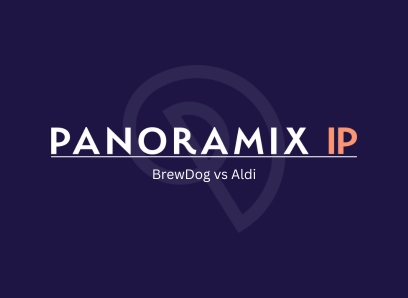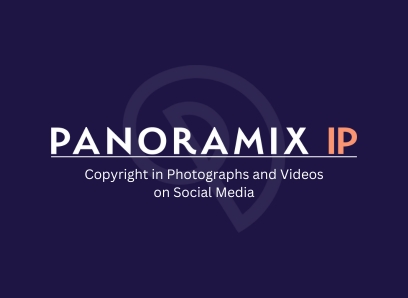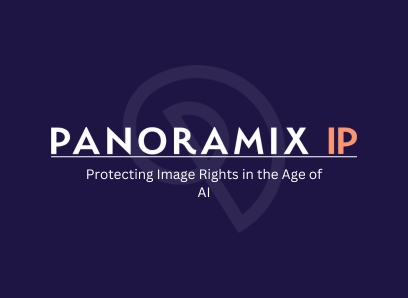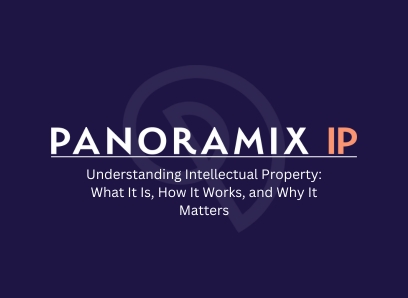In 2020, the unconventional Scottish brewery BrewDog found itself up against the German supermarket chain Aldi after Aldi introduced a new IPA called “Anti-Establishment IPA,” whose blue can and overall design suggested a striking resemblance to BrewDog’s flagship PUNK IPA.
At first glance, many consumers might have expected a trademark infringement claim since both products belong to the same category, alcoholic beverages and share similarities. However, BrewDog’s existing registered trade mark rights, “PUNK” in relevant beverage-related classes, may have been challenging to enforce against a name like “Anti-Establishment.”
Rather than taking the route of litigation, BrewDog opted for a bold, ‘cheeky’ response. After seeing the announcement of Anti-establishment IPA by Aldi, BrewDog announced the creation of ‘YALDI IPA’, which mimicked Aldi’s branding and colours, effectively flipping the dispute into a novel social media exchange. This unconventional move quickly grabbed public attention. Aldi, in kind, responded with further humour, even suggesting the name “ALD IPA” to reference the supermarket’s own name more clearly.
After some back and forth. Aldi requested a case of the proposed beer to ‘test’, and soon, the parties struck a deal for Aldi to stock BrewDog’s newly christened ALD IPA in its stores, turning a potential trademark stand-off into a co-branded business opportunity, backed by a positive public response and media coverage.
The collaboration was greeted with enthusiasm by consumers, who saw two brands deftly transform conflict into creative synergy, and both businesses emerged from the situation with enhanced reputations, stronger public goodwill, and, most importantly, a new commercial opportunity.
This outcome shows how mediation, even in an informal or tongue-in-cheek form in the court of public opinion from nationally recognised household brands, can offer advantages over conventional litigation.
We know that cost is often a major concern, as legal battles can quickly spiral into tens of thousands of pounds (or more) in legal fees, while mediation can be arranged for a fraction of that amount. Litigation can also be painfully slow, sometimes dragging on for years, whereas a negotiated or collaborative outcome might take shape much sooner.3
There is also the matter of public opinion to consider. In an increasingly social-media-driven world, even potential disputes can escalate rapidly if consumers feel one party is acting unfairly against competition to protect its market share, especially against much smaller agencies.
By choosing humour over hostility, BrewDog aligned with its self-styled “punk” ethos and tapped into modern consumers’ appetite for brands that challenge conventions rather than reach immediately for the solicitor’s letter. This response was backed by the support shown by social media audiences at the time.
The Anti-Establishment IPA situation was also a prime example of how a trademark owner can evaluate the strength of its rights and, with the correct legal support, find a profitable route forward without opting for costly litigation. Here’s how BrewDog likely achieved that:
BrewDog has a class 32 trade mark in the use of “PUNK,” for beer and larger, but when Aldi opted for the term ‘Anti-Establishment IPA’, they did not copy the word “PUNK” itself, but opted for a term which reflected the same merit. Trademark infringement requires at least one of three statements to be true:
- The marks are identical AND they are for identical goods/services
- The marks are similar AND they are for similar goods/services AND there is a likelihood of confusion
- The marks are similar AND they are not for similar goods/services BUT the mark is a “reputable mark”.
Considering these three statements above, it’s hard to see how BrewDog could have moved forward with litigation, as the trade mark BrewDog have is for “PUNK” not “Anti-establishment” so Aldi could argue that these marks are not similar; although the overall impression of the two products is somewhat familiar to each other.
In our experience, where the legal foundation is ambiguous, wading into court can be an expensive gamble, so creating a creative partnership instead can prove far more fruitful. We often believe that litigation should be recommended as a last resort, as the examples shown above can be more profitable over the lifespan of the business without incurring unnecessary legal costs.
By way of contrast, a later ruling involving Thatchers and Aldi shows that supermarket lookalike products remain a highly contested area of intellectual property law. Thatchers, a well-known cider producer for four generations, took Aldi to court for allegedly copying the branding of its Cloudy Lemon Cider, a drink known for its distinctive lemon and foliage imagery used on the packaging. Thatchers sued for trademark infringement, claiming that their trademark “Thatchers” was similar to Aldi’s brand “Taurus” and was for the same goods – alcoholic beverages.
Initially, Thatchers lost, with the High Court ruling in Aldi’s favour and dismissing the case by finding insufficient similarity to confuse the average consumer and benefit from Thatchers’ established goodwill. However, in January 2025, the Court of Appeal reversed that decision, holding that Aldi’s design and marketing did indeed exploit Thatchers’ brand recognition in a way that infringed Thatchers’ trademark rights in the hope of benefiting from Thatchers’ goodwill. There was a slight shift in Thatcher’s strategy in the appeal, they went for the “reputable mark” infringement claim, a section 10(3), instead of the similar mark and likelihood of confusion, a section 10(2) claim.
The Court of Appeal also accounted for evidence found in an email between employees at Aldi, that they intended to adopt the lemon motifs as part of the design, as Thatchers already do. The Court was shown an email in which an Aldi representative asked an agency designing the Taurus lemon cider packaging to “add lemons as Thatcher’s…” This correspondence was a contributory factor to the case being reversed.
The Thatchers case raises an interesting question we have discussed at length at Panoramix IP: Would BrewDog have opted for the same tongue-in-cheek mediation strategy if this Court of Appeal precedent had existed at the time?
On the one hand, a stronger legal standard for stopping copycat packaging could have encouraged the Scottish brewery to take formal action. On the other hand, BrewDog’s brand persona would suggest an aversion to heavy-handed legal confrontations, preferring more unconventional marketing approaches. Or being more ‘PUNK’.
There is also the matter of cost. A lengthy trademark suit can be daunting, particularly for a fast-moving craft beer company where brand image and agility are paramount, so a public relations stunt that leads to a friendly partnership, especially with an internationally recognised entity who has a history for tongue-in-cheek marketing approaches, might still be preferred to a strict legal win.
Despite this new legal precedent, many of the key arguments for mediation remain the same: a drawn-out lawsuit ties up valuable time and resources, possibly creates negative publicity, and might not guarantee a victory, even if the law is on your side.
It’s also often worth nothing that consumers often side with what they perceive as the underdog, or they simply find public disputes entertaining, which can overshadow the actual legal merits of the case. BrewDog’s approach not only grabbed headlines but also opened a partnership with one of the biggest supermarket chains in the UK, an outcome that would have been hard to achieve had both parties entrenched themselves in a lengthy legal battle.
By pivoting away from litigation, BrewDog preserved its edgy, anti-corporate tone, this time while taking advantage of mainstream retail exposure in Aldi’s stores. In some sense, both sides came away looking rebellious and innovative. Aldi signalled it was open-minded and had a sense of humour, BrewDog reinforced its punky persona, and both sold more beer as a result. The arrangement strengthened BrewDog’s distribution and offered Aldi a unique marketing story, perfectly tailored for social media and in line with the supermarket’s often-praised public approach.
This situation demonstrates how brand personality, consumer perception, and commercial realities can all intersect in a trademark scenario, sometimes making a formal lawsuit the less compelling route.
Many businesses facing potential IP disputes might look at BrewDog and Aldi’s story and wonder if they should consider a similar approach. With the correct legal guidance, they must weigh the potential rewards of a successful infringement claim against the time and cost of litigation, as well as the risk of negative press. Another key consideration is whether the situation might open unexpected business doors. Collaboration can sometimes be more profitable than a court judgment, especially if both parties can find an arrangement that pleases the public and generates revenue.
Not every brand dispute can be resolved so amicably, of course, and the Thatchers vs Aldi saga shows that companies do sometimes have to stand their ground to protect core brand identifiers. When a brand is truly well-known or globally recognised, and if there is strong evidence that a competitor is deliberately aiming to remind consumers of a certain famous product, litigation might be unavoidable.
Sometimes, a “soft” strategy can generate better headlines, as BrewDog and Aldi proved. Their story still resonates because it is a novel example of resolving a trademark skirmish through wit, negotiation, and a mutual commercial opportunity. Even if the Thatchers ruling offers a more robust path for challenging lookalikes, the BrewDog and Aldi dynamic illustrates that it is not always about merely who is legally right or wrong, but rather how creative and pragmatic both sides are willing to be.
How can we help?
We specialise in every aspect of intellectual property law, from trademarks to patents to design rights. We help our clients decide whether to pursue litigation or an alternative dispute resolution such as mediation. We provide guidance on registration, infringement risk, and brand strategy, ensuring that every business or organisation, be it a start-up craft brewery or an established drinks company, can explore all possible solutions before deciding on an affordable course of action.
We offer experienced litigation support to defend your rights if required, and if negotiation or creative collaboration is on the table, we can help you navigate that path too. We do all we can to ensure your brand reputation remains intact and your commercial interests are fully protected. At Panoramix IP, we believe that sometimes a well-timed conversation, a well-crafted licensing deal, or even a playful marketing pivot can yield a more prosperous outcome than a court order, and we are here to advise you on which approach will best suit your situation.
Interested to see how Panoramix IP can help decide whether your brand would benefit from mitigation or litigation? Contact us today to speak with one of our intellectual property solicitors for the right support.








